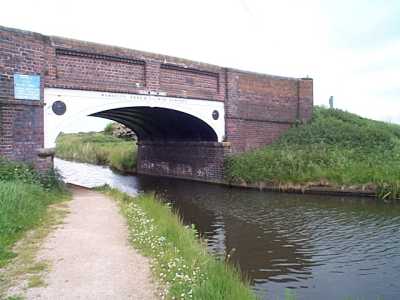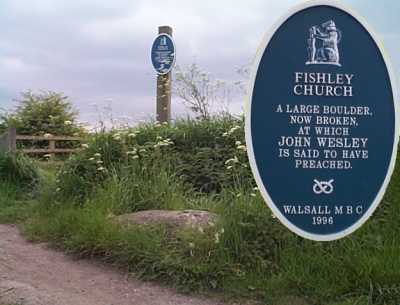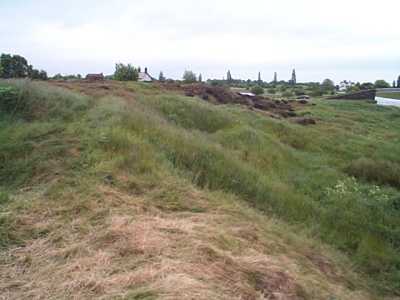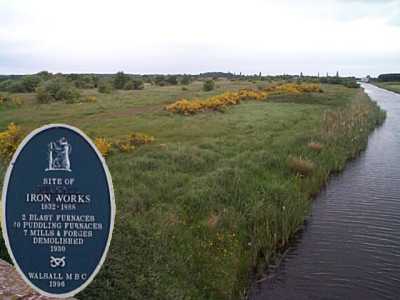|
1.
Pelsall Works Bridge, and Pelsall Junction Bridge are grade II listed
buildings. The Works Bridge has key stones dated 1824 and is
inscribed 'Horsley Coal and Iron Company'.
Top of page and map |
 |
|
|
|
1.
Each side of the Pelsall Junction Bridge (known locally as 'the Red
Iron) was cast in one piece. They are joined with a walkway of iron plates.
Top of page and map |
 |
|
2.
The 'Church Stone' at Fishley Lane was used as a platform from which
the local clergy preached. It is said that whilst visiting the area,
John Wesley preached from the stone. The Church Stone was damaged by
contractors who were working in the area, only part of the stone
still survives.
Top of page and map |
 |
|
3.
10 metres south of this point is a pool constructed to supply water
for the old iron works. The surrounding beds of reedmace are well
established and occasionally need clearing out to retain open water.
Look for dragonflies and damselflies here in summer.
Top of page and map |
 |
|
4.
This is the site of Huddocks Moor Farm. Evidence of the old farm
buildings can still be seen. South of the track are wet areas where
reed buntings may be seen.
Top of page and map |
 |
|
5.
The clear water of the Cannock Extension Canal supports many
interesting aquatic plants. The bright green and blue emperor
dragonfly is one of several species which patrol the canal in summer.
Top of page and map |
 |
|
6.
Lowland heath is a nationally and even internationally rare habitat.
It needs special protection and management to retain its wildlife
value. Many heaths have been lost because of development or neglect.
Top of page and map |
 |
|
7.
In winter the pool and wet areas often hold small numbers of mallard
and snipe. Mute swans have been known to nest here in spring, but
occasionally have to leave because the pool dries out in very hot weather.
Top of page and map |
 |
|
8.
Over a long period of time heathland vegetation has colonised the
acidic coal spoil. This contrasts with the lime rich soil further west.
Top of page and map |
 |
|
9.
This is the site of the old iron works. In summer this area has a
rich and colourful flora including many uncommon lime loving plants.
These in turn attract an abundance of insects such as the common blue butterfly.
Top of page and map |
 |

